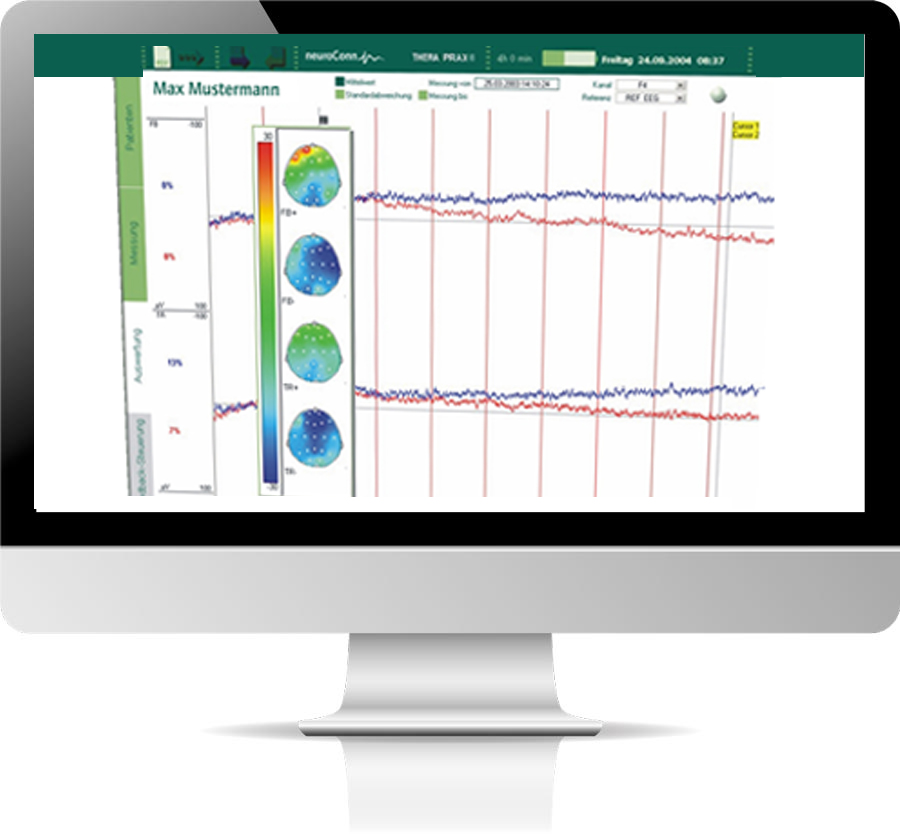The collection of QEEG and neuropsychological information is an important step in our personalized care process.
Before attending any treatment sessions for Neurofeedback, your therapist must determine specific biomarkers of brain activity through this QEEG assessment. This information helps to ensure the treatment protocols selected for each patient will be the most effective possible and follows scientifically proven evidence-based treatment guidelines.
A QEEG session is usually booked as a 2.5-3 hour appointment, after the initial consultation with your therapist has been completed and the decision to move forward with treatment has been made.

6 Steps to our QEEG Assessment session
Step 1
The patient is asked to complete a questionnaire about how their activity before coming for the QEEG session. The therapist then measures the patient’s head to determine the location of the electrodes.
Some areas of the patient’s scalp and face will be lightly washed in preparation for placing the electrodes, as good contact with the skin is needed to receive a high-quality signal from the brain.
This type of information collection is common and important for many disorders of the brain but relatively new for mental disorders like ADHD. Our centers also include this important step before developing a treatment plan specific for a patient.
Step 2
The patient is asked to complete a questionnaire about how their activity before coming for the QEEG session. The therapist then measures the patient’s head to determine the location of the electrodes.
Some areas of the patient’s scalp and face will be lightly washed in preparation for placing the electrodes, as good contact with the skin is needed to receive a high-quality signal from the brain.
This type of information collection is common and important for many disorders of the brain but relatively new for mental disorders like ADHD. Our centers also include this important step before developing a treatment plan specific for a patient.
Step 3
The patient is asked to complete a questionnaire about how their activity before coming for the QEEG session. The therapist then measures the patient’s head to determine the location of the electrodes.
Some areas of the patient’s scalp and face will be lightly washed in preparation for placing the electrodes, as good contact with the skin is needed to receive a high-quality signal from the brain.
This type of information collection is common and important for many disorders of the brain but relatively new for mental disorders like ADHD. Our centers also include this important step before developing a treatment plan specific for a patient.
Step 4
The final component of the QEEG assessment is comprised of a neuropsychological assessment. This is a computerized neuropsychological test battery that takes approximately one hour and is completed on a touchscreen device.
Small children may do so under adult supervision if necessary.
Instructions for completing the test will be given through audio headphones and the touchscreen itself.
Step 5
After the information collection process is completed, the patient’s specific information is sent to experts in the field for detailed analysis.
Within one to two weeks a report is completed, and a personalized treatment plan is developed by an experienced therapist.
Step 6
A follow-up appointment will then be scheduled so the results of the assessment report and the personalized treatment plan resulting from these assessments can be presented to the patient and the treatment process can begin.
Copyright © 2024 | All Rights Reserved